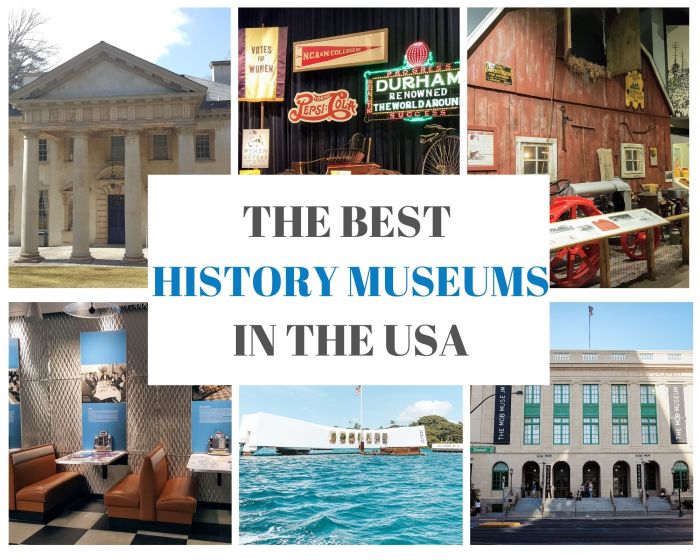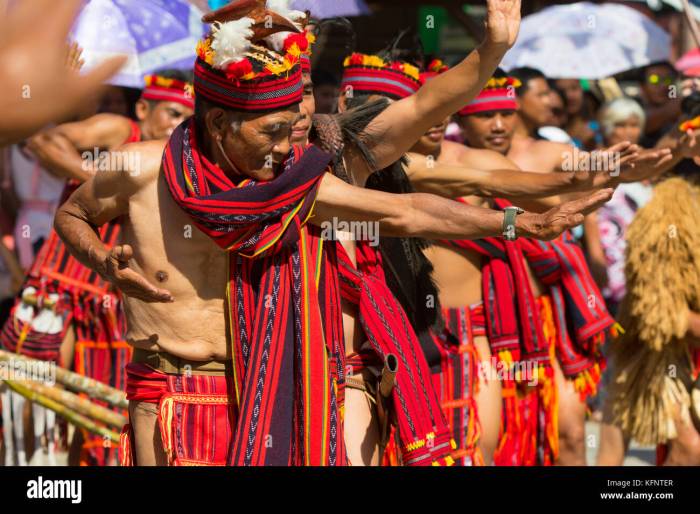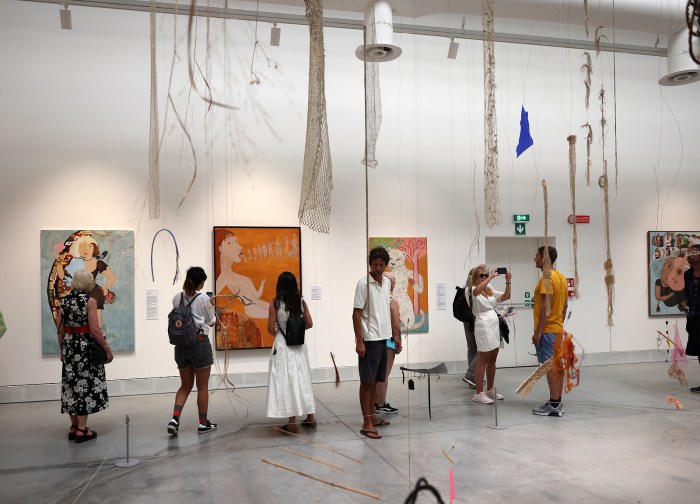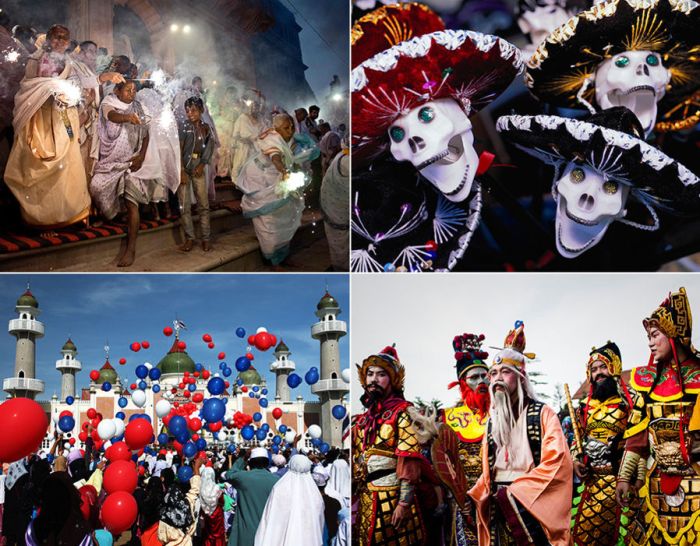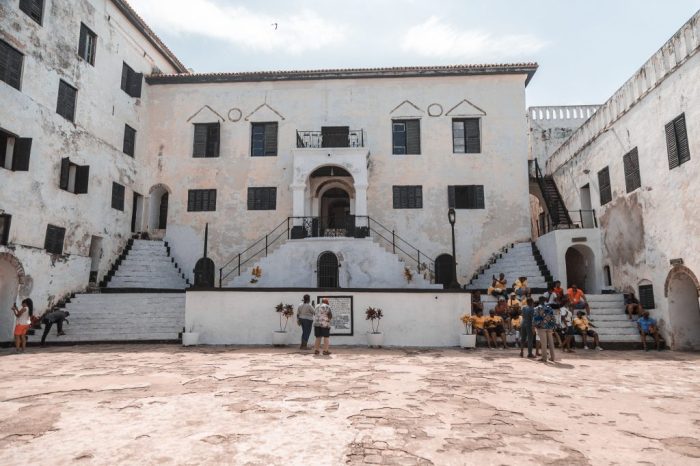
Cultural Heritage Tours in Africa offer an unparalleled journey through time and tradition. From the ancient pyramids of Egypt to the vibrant markets of Morocco, the continent’s rich tapestry of history, art, and culture awaits exploration. These tours provide more than just sightseeing; they offer immersive experiences, fostering deeper understanding and appreciation of diverse communities and their unique legacies.
Whether you seek historical landmarks, wildlife encounters interwoven with cultural insights, or community-based tourism initiatives, a thoughtfully planned African heritage tour promises a transformative experience.
These journeys often incorporate sustainable practices, ensuring the preservation of cultural sites and the empowerment of local communities. Travelers can expect engaging interactions with local artisans, storytellers, and guides, gaining firsthand knowledge of customs, traditions, and daily life. The diverse range of experiences, from exploring ancient ruins to participating in traditional ceremonies, promises an unforgettable adventure that leaves a lasting impact.
Defining Cultural Heritage Tours in Africa
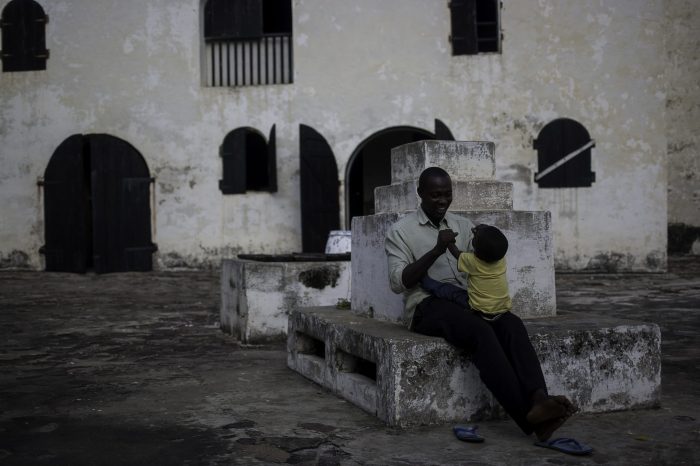
Cultural heritage tourism in Africa offers a unique and enriching experience, far beyond the typical beach vacation. It provides a window into the continent’s vibrant tapestry of traditions, histories, and artistic expressions, fostering deeper understanding and appreciation. These tours go beyond simply sightseeing; they aim to connect travelers with the living cultures and legacies of African communities.
Africa’s diverse cultural heritage manifests in countless ways. From the ancient pyramids of Egypt and the historical sites of Zimbabwe to the vibrant marketplaces of Morocco and the stunning landscapes of Tanzania, each region presents a distinct cultural identity. Visitors can explore ancient ruins, witness traditional ceremonies, learn about local art forms, engage in culinary experiences, and interact with communities, all contributing to a rich and immersive experience.
These experiences extend beyond tangible artifacts to encompass intangible heritage like storytelling, music, dance, and traditional crafts, providing a holistic understanding of African cultures.
Key Elements of a Successful Cultural Heritage Tour
A successful cultural heritage tour in Africa hinges on several crucial elements. First and foremost is authenticity. The experience should genuinely reflect the local culture and avoid contrived or staged performances. Respect for local communities is paramount; tours should prioritize ethical and sustainable practices, ensuring that local people benefit directly from tourism and their cultural heritage is preserved rather than exploited.
Well-informed and knowledgeable guides are also essential, capable of providing insightful commentary and fostering meaningful interactions between visitors and the local population. Finally, the itinerary should be well-planned and paced, allowing ample time for immersion and reflection, rather than rushing from one site to another.
Mass Tourism versus Culturally Sensitive Heritage Tourism
Mass tourism often focuses on volume and profit, potentially leading to environmental damage and cultural commodification. Culturally sensitive heritage tourism, conversely, prioritizes respect for local cultures and environments. It emphasizes sustainable practices, equitable benefit-sharing with local communities, and meaningful engagement with the local population. Mass tourism might involve large tour groups visiting sites quickly, while culturally sensitive tourism promotes smaller, more intimate groups with a focus on interaction and learning.
The former can contribute to overcrowding and environmental degradation, while the latter aims to minimize negative impacts and maximize positive contributions to local communities. For example, a mass tourism approach might involve a large bus tour of a historical site with little interaction with the local people, while a culturally sensitive approach would involve a smaller group participating in a traditional craft workshop led by a local artisan.
Comparative Analysis of Cultural Heritage Tours in Three African Countries
The following table compares cultural heritage tourism in three diverse African nations, highlighting the unique offerings of each:
| Country | Key Attractions | Cultural Experiences | Sustainability Initiatives |
|---|---|---|---|
| Egypt | Pyramids of Giza, Valley of the Kings, Abu Simbel | Witnessing traditional Nubian culture, exploring ancient Egyptian crafts, learning hieroglyphics | Community-based tourism projects, preservation efforts for ancient sites, responsible visitor management |
| Morocco | Marrakech souks, Fes medina, Sahara Desert | Experiencing Berber culture, learning traditional crafts like pottery and carpet weaving, enjoying traditional Moroccan cuisine | Support for local artisans, eco-lodges in the desert, responsible travel agencies |
| South Africa | Table Mountain, Kruger National Park, Robben Island | Exploring township cultures, learning about the history of Apartheid, experiencing traditional Xhosa or Zulu dances | Fair trade initiatives, community-based tourism in townships, conservation efforts in national parks |
Types of Cultural Heritage Tours

Africa’s diverse cultural landscape offers a wealth of experiences for heritage tourism. From ancient ruins to vibrant contemporary communities, the continent provides opportunities for immersive and enriching journeys. Understanding the different types of cultural heritage tours available allows travelers to choose experiences that align with their interests and contribute to sustainable tourism practices.
Historical Site Tours
Historical site tours focus on exploring Africa’s rich past through its physical remnants. These tours often involve visits to ancient cities, archaeological digs, battlefields, and colonial-era buildings. They provide insights into the historical development of different regions, the rise and fall of empires, and the impact of various cultural influences. A unique experience might include exploring the Great Zimbabwe ruins in Zimbabwe, imagining the lives of the Shona people who built this magnificent stone city centuries ago, or delving into the history of the Aksumite civilization in Ethiopia, known for its impressive obelisks and ancient churches.
Responsible tour operators in this sector prioritize minimal environmental impact, employing local guides and supporting community projects near the historical sites.
Wildlife Safaris with Cultural Components
Many African safaris integrate cultural elements, enriching the wildlife viewing experience. These tours combine game drives or walking safaris with visits to local communities, allowing travelers to witness both the stunning natural beauty and the vibrant cultures of the region. For example, a safari in Tanzania might include a visit to a Maasai village, offering an opportunity to learn about their traditions, customs, and way of life.
Sustainable practices here involve employing local guides and community members, ensuring that tourism revenue directly benefits the local population and supports wildlife conservation efforts. This type of tour often features images of breathtaking landscapes dotted with wildlife, juxtaposed with vibrant photos of Maasai dancers in traditional attire or women crafting intricate beadwork.
Community-Based Tourism
Community-based tourism (CBT) places local communities at the heart of the tourism experience. These tours are designed to empower local people by providing them with economic opportunities while preserving their cultural heritage. This could involve staying in homestays, participating in local crafts workshops, or learning traditional farming techniques. A visit to a rural village in Namibia, for example, might include learning about traditional Himba culture, participating in a traditional dance, and experiencing a unique culinary tradition.
Responsible operators ensure fair wages for community members, environmental protection, and respect for local customs. A brochure might showcase images of smiling community members welcoming visitors, alongside photos of traditional homes and crafts.
Brochure Design: Sample Tour Options
A brochure showcasing these tour options could use vibrant imagery and concise descriptions. For example:
| Tour Type | Location | Highlights | Image Description |
|---|---|---|---|
| Historical Site Tour | Great Zimbabwe, Zimbabwe | Explore the ancient stone city, learn about Shona civilization. | A panoramic view of the Great Zimbabwe ruins at sunset, showcasing the impressive stone walls and towers against a fiery sky. |
| Wildlife Safari with Cultural Component | Tanzania | Game drives in the Serengeti, visit to a Maasai village. | A split image; one side showing a lion pride in the Serengeti grassland, the other depicting Maasai warriors performing a traditional dance. |
| Community-Based Tourism | Namibia | Stay in a Himba village, learn traditional crafts and customs. | An image of a Himba village with traditional huts, women adorned with ochre and jewelry, and children playing. |
Marketing and Promotion of Cultural Heritage Tours
Successfully marketing cultural heritage tours in Africa requires a multi-faceted approach that leverages both the power of digital platforms and the enduring effectiveness of traditional methods. Understanding the target audience and tailoring messaging to resonate with their interests is crucial for maximizing reach and generating bookings. A strong brand identity, coupled with compelling visuals and authentic storytelling, are essential components of a successful marketing strategy.Effective Marketing Strategies for Attracting Tourists Interested in Cultural Heritage ToursEffective marketing strategies must highlight the unique and authentic experiences offered by African cultural heritage tours.
This involves showcasing the richness and diversity of African cultures, emphasizing the immersive nature of the tours, and providing clear information about what participants can expect. A strong emphasis on sustainability and responsible tourism practices is also increasingly important to attract environmentally and socially conscious travelers. High-quality photography and videography are crucial for visually showcasing the beauty and wonder of the destinations.
Examples of Successful Marketing Campaigns Highlighting African Cultural Heritage
Several successful campaigns have effectively showcased African cultural heritage. For example, “Visit Rwanda” has utilized stunning visuals and compelling storytelling to position Rwanda as a premier destination for cultural tourism, highlighting its gorillas, vibrant arts scene, and unique history. Similarly, campaigns focusing on specific cultural festivals, such as the annual Osun-Osogbo festival in Nigeria, have successfully attracted international tourists by showcasing the vibrant rituals and traditions associated with these events.
These campaigns have often used a combination of digital and traditional media to reach their target audiences.
Comparison of Digital Marketing vs. Traditional Marketing Methods
Digital marketing offers significant advantages in terms of reach and cost-effectiveness. Social media platforms like Instagram and Facebook allow for targeted advertising to specific demographics interested in cultural tourism. Search engine optimization () ensures that tour websites rank highly in search results, increasing visibility to potential customers. Email marketing allows for personalized communication and nurturing of leads.
However, traditional marketing methods, such as print advertising in travel magazines and collaborations with travel agents, still play a vital role, particularly in reaching older demographics who may be less reliant on digital platforms. A blended approach, utilizing both digital and traditional strategies, generally yields the best results.
Social Media Campaign Plan for Promoting a Specific Cultural Heritage Tour
Let’s consider a hypothetical social media campaign for a tour focusing on the ancient ruins of Great Zimbabwe. The campaign would run for six weeks leading up to the tour departure.
Phase 1: Pre-launch (Weeks 1-2)
Focus on building anticipation. Post stunning images and videos of Great Zimbabwe, highlighting its history and significance. Run contests and giveaways to encourage engagement and build a following. Utilize relevant hashtags, such as #GreatZimbabwe, #ZimbabweTourism, #AfricanHeritage, #CulturalTourism.
Phase 2: Engagement (Weeks 3-4)
Share informative content about the tour itinerary, including details about the activities, accommodation, and cultural experiences. Feature testimonials from past participants. Run Facebook and Instagram ads targeting specific demographics interested in history, archaeology, and African culture.
Phase 3: Booking (Weeks 5-6)
Increase the urgency to book. Offer early bird discounts or limited-time promotions. Run targeted ads emphasizing the limited availability of spots on the tour. Post a countdown timer leading up to the booking deadline. Maintain consistent engagement with followers, responding to comments and questions promptly.
The Economic Impact of Cultural Heritage Tourism: Cultural Heritage Tours In Africa
Cultural heritage tourism, the exploration of a region’s historical sites, cultural practices, and artistic expressions, presents a significant economic engine for both local communities and national economies across Africa. Its impact extends far beyond simple tourist spending, fostering sustainable development and improving livelihoods in ways that traditional industries often cannot.Cultural heritage tourism generates substantial revenue through various channels, stimulating economic growth at both the micro and macro levels.
This revenue is not only generated directly through entrance fees, guided tours, and accommodation but also indirectly through the support of related industries like handicrafts, food services, and transportation. This multiplier effect ensures that the benefits are widely distributed, reaching even the most remote communities.
Job Creation and Poverty Reduction, Cultural Heritage Tours in Africa
The growth of cultural heritage tourism directly translates into increased employment opportunities within local communities. This includes jobs for tour guides, artisans producing local crafts, hospitality staff in hotels and restaurants, transportation providers, and individuals involved in the preservation and maintenance of heritage sites. By providing sustainable income sources, cultural heritage tourism offers a powerful tool for poverty reduction, empowering local populations and promoting economic self-sufficiency.
For example, the revitalization of ancient trading routes in Morocco has led to the creation of numerous small businesses catering to tourists, significantly reducing unemployment in the surrounding villages.
Challenges and Risks Associated with Cultural Heritage Tourism
While the economic benefits are considerable, the uncontrolled growth of cultural heritage tourism can pose significant challenges. Over-tourism can lead to environmental degradation, damage to historical sites, and the erosion of cultural authenticity. Furthermore, the uneven distribution of benefits, where profits primarily accrue to larger corporations or external stakeholders rather than local communities, can exacerbate existing inequalities. Another critical risk is the potential for the commodification of culture, transforming authentic traditions into mere spectacles for tourist consumption, thus diminishing their cultural significance.
Sustainable management strategies, including responsible tourism practices and equitable benefit-sharing mechanisms, are crucial to mitigate these risks.
Economic Impact Report: A Hypothetical Case Study – The Great Zimbabwe Ruins
Let’s consider a hypothetical case study focusing on the Great Zimbabwe Ruins in Zimbabwe. Assume a successful tourism management strategy increased visitor numbers from 100,000 annually to 250,000 over five years. This increase directly translates to a significant rise in revenue from entrance fees. Further, let’s assume that for each visitor, an average of $50 is spent on local goods and services (accommodation, food, souvenirs, transportation).
This would mean an additional $7.5 million annually injected into the local economy. This increased revenue could be further leveraged to improve infrastructure, support local artisans, and create educational programs focused on the preservation of the site and its cultural heritage. Furthermore, the increased employment opportunities, coupled with improved infrastructure and economic activity, would contribute to poverty reduction within the surrounding communities.
This example illustrates the potential for cultural heritage tourism to stimulate economic growth and social development when managed effectively and sustainably. However, it’s crucial to remember that this is a hypothetical example; a real-world analysis would require detailed data collection and economic modelling.
Ultimately, Cultural Heritage Tours in Africa are not merely vacations; they are transformative journeys that connect travelers to the heart and soul of the continent. By supporting responsible tourism initiatives, visitors contribute to the preservation of Africa’s invaluable heritage while simultaneously enriching their own lives with unforgettable memories and profound cultural insights. The diverse experiences, the sustainable practices, and the human connections forged along the way make these tours a truly rewarding investment in both personal growth and the future of Africa’s cultural legacy.
Top FAQs
What is the best time of year to visit Africa for cultural heritage tours?
The ideal time varies by region. Generally, dry seasons (avoiding rainy periods) are best for comfortable travel and site access. Consult specific region guides for optimal travel times.
What are the visa requirements for cultural heritage tours in Africa?
Visa requirements vary significantly depending on your nationality and the specific African country you plan to visit. Check the visa requirements of each country well in advance of your trip.
Are guided tours necessary for cultural heritage tourism in Africa?
While not always mandatory, guided tours are highly recommended. Local guides provide invaluable insights, cultural context, and logistical support, enhancing the overall experience.
How can I ensure I am supporting sustainable tourism practices?
Choose tour operators committed to sustainability, support local businesses, respect local customs, and minimize your environmental impact. Look for certifications and responsible tourism initiatives.
